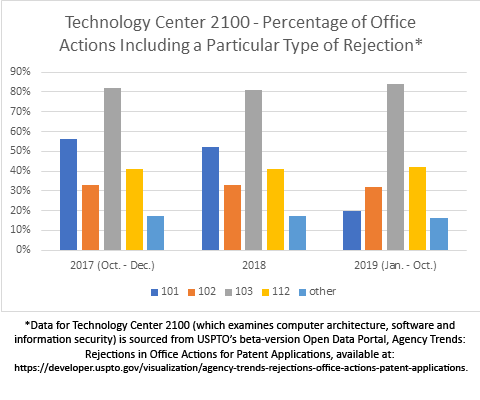The Federal Circuit’s recent Uniloc decision provides welcome support for an uptrend in the allowance rate of software-related patents. In Uniloc USA, Inc. v. LG Elecs. USA, Inc., 957 F.3d 1303 (Fed. Cir. 2020), the Federal Circuit seems to be guiding the law back toward a more pragmatic standard for patentability—one that focuses on whether a claim is directed toward a practical, real-world improvement. In particular, after summarizing several cases in which courts found patentable subject matter, the Federal Circuit explained that patent-eligible improvements in computer functionality include devices that are configured to perform a method step more efficiently, namely, speeding up the communication time between devices in a network.

Here, it is worth emphasizing that the key technological improvement in Uniloc is essentially a device that is configured to perform a method step with greater efficiency. In particular, Uniloc involves a device “wherein means are provided . . . for adding . . . an additional data field” to a set of predetermined data fields, thereby decreasing latency or delay in the communication of data from one network component to another. On this point, the Federal Circuit clarified that an improvement is not patent-ineligible merely because “the improvement is not defined by reference to ‘physical’ components.”
However, the Court also pointed out that the claims recited enough structure to describe a device that could actually accomplish the technological improvement at issue—decreased latency. According to the Court, this key factor distinguished Uniloc from earlier cases like Digitech, which found that the claimed invention was not patent-eligible.
Uniloc is especially helpful for inventors because the Federal Circuit not only found that the claimed invention was patent eligible, but it found that the claims were not directed to an abstract idea in Alice step one. This decision, in turn, allowed Uniloc to bypass Alice step two altogether, along with the need to analyze whether the claimed invention recites enough features to transform an abstract idea into a specific patent-eligible application of the idea.
In short, if you have invented a new device that uses software to result in technological improvements, the chances of successfully obtaining a patent appear to be improving. For an initial consultation regarding your ideas, please do not hesitate to call 972-367-2001 or email bzuniga@caglaw.com. More information and articles can be found by visiting the Carstens, Allen & Gourley, LLP website at caglaw.com.


